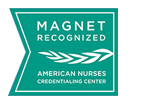Document Type
Article
Publication Date
2-2025
Identifier
DOI: 10.1177/18758894241290054
Abstract
PurposeThis retrospective cohort study sought to examine participant skill and functional progression in an adaptive snow sports program for children and young adults with disabilities.MethodsOne hundred twelve individuals, majority male, who participated in at least 2 adapted ski or snowboard sessions were evaluated by trained adaptive instructors. The primary outcome measure was standardized skill level ranging from 1-novice to 9-expert. Secondary outcome measures of cognitive, emotional, social, physical, and independence scores, were rated on a scale from 1-5, with 5 being the highest.ResultsThe median number of sessions per participant was 4 (range 2-65 sessions) and median participation duration was 2 years (range 2-10 years). A Wilcoxon-rank sum test demonstrated an improvement in final skill level compared to baseline (p < 0.0001), with an average increase of 1.2 skill levels per participant and an average increase of 0.48 skill levels per year of involvement. There were also improvements from initial session to final session in all secondary outcomes: social (p = 0.002), emotional (p = 0.018), physical (p < 0.0001), and independence (p < 0.0001) scores.ConclusionOverall, there were improvements in all measured domains. This uses objective and functional measures to validate ongoing engagement with this adaptive skiing program at the athlete, volunteer, and organizational levels.
Journal Title
J Pediatr Rehabil Med
Volume
18
Issue
1
First Page
42
Last Page
46
MeSH Keywords
Humans; Male; Female; Child; Retrospective Studies; Adolescent; Young Adult; Snow Sports; Persons with Disabilities; Skiing; Sports for Persons with Disabilities; Children with Disabilities
PubMed ID
40153273
Keywords
adaptive skiing; adaptive sports; pediatric rehabilitation
Recommended Citation
Barton SM, McLaughlin MJ, Fisher MT. Improvement on the slopes: The impact of an adaptive snow sports program on children and young adults with disabilities. J Pediatr Rehabil Med. 2025;18(1):42-46. doi:10.1177/18758894241290054




Comments
This article is distributed under the terms of the Creative Commons Attribution-NonCommercial 4.0 License (https://creativecommons.org/licenses/by-nc/4.0/) which permits non-commercial use, reproduction and distribution of the work without further permission provided the original work is attributed as specified on the SAGE and Open Access page (https://us.sagepub.com/en-us/nam/open-access-at-sage).
Publisher's Link: https://doi.org/10.1177/18758894241290054